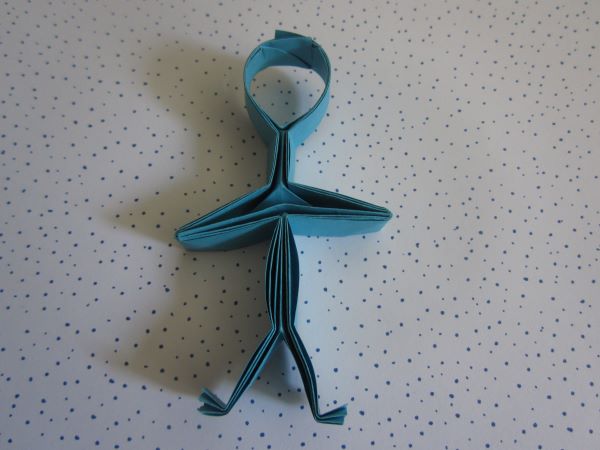
Stick Figure, designed by Thomas Speckman
This design is made by someone I know, a teenager that I see in the local origami space. For him, this is a very simple design, something he can teach others in the space of an hour. I often see him working on prototypes of much more complex designs, using massive yard-long paper.
Here’s how an origami designer would analyze the stick figure. We see the model as a tree (in the graph theory sense). The tree contains 6 leaves: the two feet, the two arms, and the head (made of two points attached together). The tree also has two edges between branches:: the neck, and the body. Knowing the structure of the tree allows us to draw a crease pattern. This particular model uses “box pleating” techniques, which means that the creases are all horizontal, vertical, or at 45 degrees. For advanced origamists, this is all in plain sight, and I’m sure it would be easy to reverse-engineer if I didn’t already have the instructions.

And a cool thing is that you could choose the lengths of all of the leaves and branches to be arbitrary integer multiples of the same unit distance and, using “box pleating” (and/or several other similar techniques) could construct the crease pattern that folded the desired tree, each version from a single uncut square.
golly
I think I could manage that